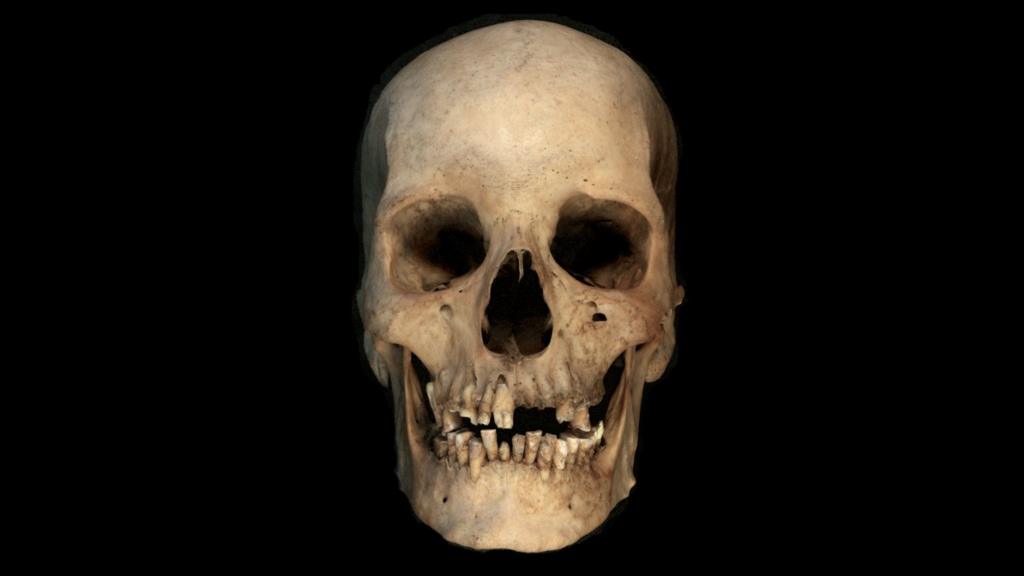“`html
A DNA analysis of a 4,500-year-old skeleton discovered in the Nile Valley is providing new insights into the development of Ancient Egyptian civilization.
Examination of the remains revealed that approximately one-fifth of the individual’s DNA originated from ancestors residing 1,500km away in Mesopotamia, present-day Iraq – another prominent civilization of that era.
This finding represents the first biological evidence of a connection between the two civilizations, potentially illuminating how Egypt evolved from a collection of disparate agricultural settlements into one of history’s most powerful empires.
The research bolsters the theory that the emergence of writing and agriculture was facilitated by the exchange of people and ideas between these two ancient societies.
Prof. Pontus Skoglund of the Francis Crick Institute in London, the lead researcher, noted that the ability to extract and analyze DNA from ancient remains promises to enrich our understanding of past events and individuals, adding nuanced details to established historical narratives.
“The integration of further DNA data with existing archaeological, cultural, and textual information from the period holds immense potential for advancing our knowledge,” he stated.
Historical accounts, often penned by the elite, primarily focus on the lives and affairs of the powerful.
Biological methodologies offer historians and scientists a novel means of examining history from the perspectives of ordinary individuals.
The DNA sample was extracted from a bone located in the inner ear of a man buried in Nuwayrat, a village situated 265km south of Cairo.
His death occurred between 4,500 and 4,800 years ago, a pivotal period for both Egypt and Mesopotamia. Archaeological evidence suggests that contact between the two regions may have begun as early as 10,000 years ago, coinciding with the development of agriculture and animal domestication in Mesopotamia.
Many scholars posit that this social and technological transformation may have influenced similar developments in ancient Egypt, although definitive proof of interaction has been lacking until now.
Adeline Morez Jacobs, who analyzed the remains as part of her PhD research at Liverpool John Moores University, emphasized that this discovery provides the first unequivocal evidence of substantial migration and knowledge exchange between the two major centers of civilization at the time.
“Given that both regions were developing the first writing systems, archaeologists have long suspected contact and the transmission of ideas. We now have concrete evidence to support this theory.”
“Future DNA analyses from ancient Egyptian remains may further elucidate the timing and extent of this movement from West Asia.”
The man was interred in a ceramic vessel within a tomb carved into a hillside. His burial predates the widespread practice of artificial mummification, which may have contributed to the preservation of his DNA.
By examining the chemical composition of his teeth, researchers were able to determine his diet, suggesting that he had likely spent his formative years in Egypt.
The investigation extended beyond DNA analysis.
Prof. Joel Irish of Liverpool John Moores University conducted a thorough skeletal analysis to reconstruct the individual’s life.
“The goal was to understand who this person was – to ascertain his age, stature, occupation, and to personalize the narrative rather than treating him as an impersonal specimen,” he explained.
Skeletal indicators suggested an age between 45 and 65 years, with arthritis suggesting the older end of the range. His height was just over 5ft 2in, considered short even at the time.
Prof. Irish also concluded that the man was likely a potter. The enlarged hook-shaped bone at the base of his skull indicated frequent downward gazing. Expanded seat bones suggested prolonged periods of sitting on hard surfaces. His arms showed evidence of repetitive back-and-forth movements, and muscle markings indicated regular lifting of heavy objects.
“This suggests a life of hard labor,” the professor noted.
Dr. Linus Girdland Flink explained that the availability of this particular skeleton for study was due to a fortuitous circumstance.
“Excavated in 1902, it was donated to World Museum Liverpool and subsequently survived the Blitz, which destroyed most of the human remains in their collection. We have now been able to piece together part of this individual’s story, revealing ancestral links to the Fertile Crescent and highlighting the extent of intergroup mixing during this period,” he said.
The research has been published in the journal Nature.
A DNA bone test on a man who lived 4,500 years ago in the Nile Valley has shed new light on the rise of the Ancient Egyptian civilisation.
An analysis of his skeleton shows that a fifth of his DNA came from ancestors living 1,500km away in the other great civilisation of the time, in Mesopotamia or modern day Iraq.
It is the first biological evidence of links between the two civilisations, and could help explain how Egypt was transformed from a disparate collection of farming communities to one of the mightiest civilisations on Earth.
The findings lend new weight to the view that writing and agriculture arose through the exchange of people and ideas between these two ancient worlds.
The project aims to showcase influential black individuals throughout history.
Victor Works on Bolton Hall Road in Bradford could become flats in plans submitted to the council.
Artwork includes an exploration of the creations of the universe, as well as key historical moments.
Those who want to learn more about the fire of 1675 will be able to attend a university event.
The Warbstow Bury hillfort will be taken over by Cornwall Heritage Trust to be preserved “for future generations.”
“`

